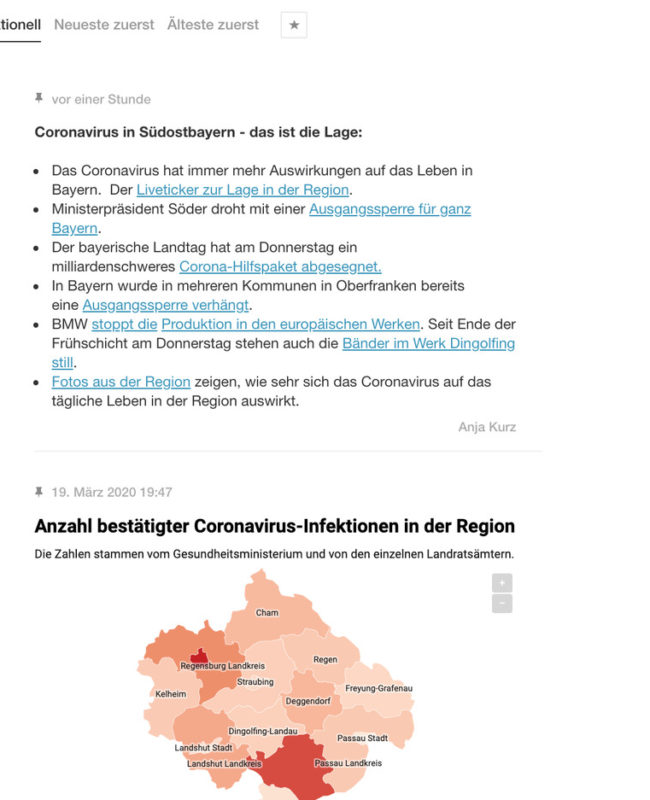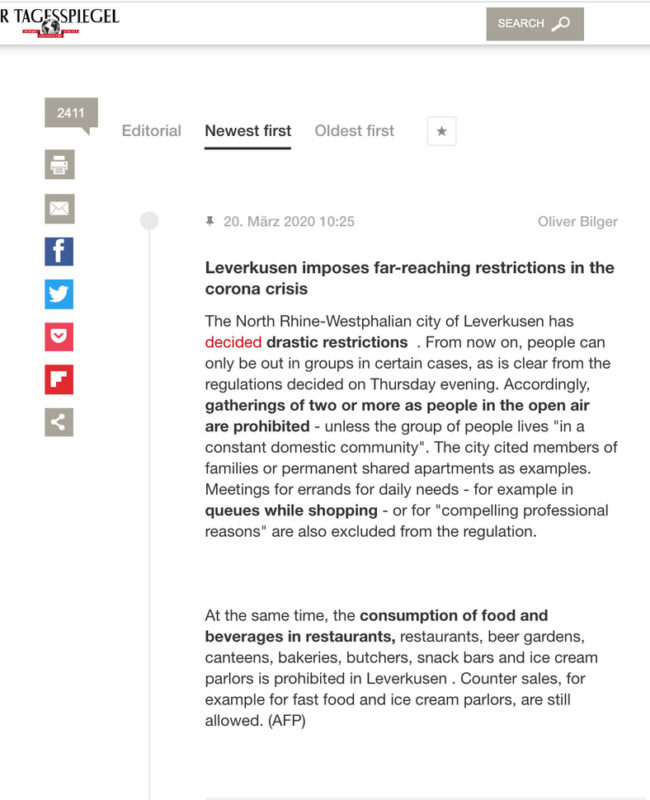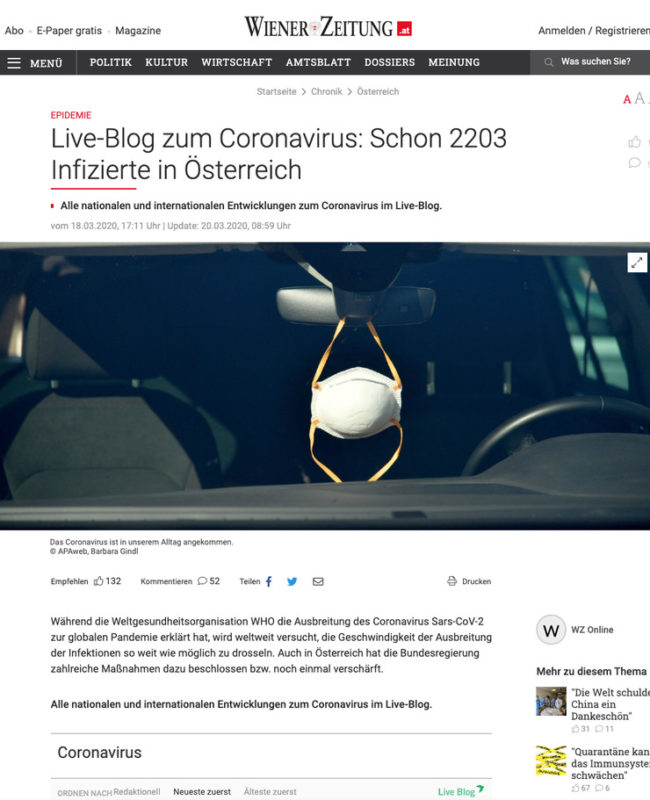by Gregory Bruno | April 8, 2020
April 8, 2020
Case Study: How a global crisis inspired publishing innovation

CASE STUDY
NTB: How a global crisis inspired publishing innovation
To cover rapidly changing events, news organizations must be nimble. For stories like the coronavirus, which is developing faster than any story in recent memory, they also need the right tools to satisfy readers’ insatiable demand for information.
At NTB, Norway’s leading news agency, the COVID-19 pandemic was an opportunity to solve a long-standing problem: how to quickly and efficiently deliver news as it happens to news publisher clients. Integrating Live Blog, our professional live-blogging software, with Superdesk, NTB’s publishing platform and open-source headless CMS, was the solution.
The Challenge

NTB technology and development editor Magnus Aabech
While NTB had been a Live Blog client for years, they stopped using it regularly in 2019 due to a number of technical hurdles. Back then, the only way to populate Live Blog was to manually move published stories from Superdesk, a labourious process that made little financial sense. Although many NTB clients had requested a streamlined way to receive bulletins, short news items, and news briefs from the agency’s wire feed, there was no incentive to develop a solution.
The coronavirus crisis changed that calculus. Seemingly overnight, NTB clients were in desperate need of concise local and international coverage, what NTB technology and development editor Magnus Aabech calls “the type of wire copy that we specialise in.”
To meet this surge in demand, NTB needed to provide clients with a curated, consistent source of news that did not require them to go searching in the “normal wire, where it’s difficult,” Aabech says. Eventually, NTB realised the optimal solution was to offer live coverage by reviving its shelved Live Blog instance. “But, we didn’t want to actually produce this content in Live Blog,” says Aabech, “because then we would have to do double the work.”
The Solution
Using a third-party tool called Integromat, Sourcefabric connected NTB’s Superdesk instance with the agency’s Live Blog feed, giving NTB a new distribution channel for its content. “Superdesk and Live Blog have their own APIs, but they don’t speak to each other directly,” says Renat Isch, Sourcefabric’s business development manager. “To address this, we created a dedicated integration module in Integromat that receives data from Superdesk with a webhook, transforms it, and then pushes it automatically to Live Blog.”
For NTB, the outcome was a highly efficient way to deliver content to clients that can be embedded directly on their own sites. The agency created two separate Live Blogs: one dedicated to the most important coronavirus stories of the day, and a second, more general news bulletin on coronavirus developments, which mirrors stories published on the agency’s news wire and is currently being used by about two dozen clients. “Live Blog in this sense works as a digital platform for us,” says Aabech. “We just offer the Live Blog embed code and clients use it as a story.” Moreover, when content in NTB’s Live Blog is updated, it is echoed on client sites because the embed code stays the same.
The Results
Since its relaunch in early 2020, NTB’s Live Blog service has been gaining in popularity. “As we’re seeing, local newspapers have a real need for national and international news at the moment,” says Aabech. “Big newspapers in Norway, as around the world, are offering real-time coverage of the COVID-19 crisis – showcasing graphics, photos, text, and bullet points in a news stream format. This is our way of being able to offer the same thing to all of our clients.”
NTB is even exploring ways to expand its offerings – from breaking news to sports. “In the past, our distribution system had limitations, but with this Superdesk-Live Blog integration, we can do it in a different way and get content to market faster and more efficiently.”
Aabech adds: “A lot of the potential of Superdesk isn’t being used by agencies or publishers; many of us are often stuck in our old production routines. To break free from that stuff we’ve got to play around, which is what we’re doing now.”
March 20, 2020
Covering the Coronavirus: Live Blog Use Cases

CASE STUDIES
Covering the Coronavirus: Live Blog Use Cases
by Gregory Bruno | March 20, 2020
As the global coronavirus pandemic continues to spread, journalists are getting creative in their efforts to keep audiences informed. Quarantined to their own two-metre bubbles, reporters are working from home with hacked gear in make-shift studios. Data sharing partnerships are cropping up online, and in the US state of Oregon, news outlets are even dropping the pretence of competition to cross-post stories and eliminate the need to duplicate work.
Software is helping these innovations along. To cover one of the biggest news events in modern memory, newsrooms are turning to technology that is cloud based, flexible, and collaborative. Live Blog, Sourcefabric’s professional live blogging platform, is among the open-source tools that is helping to power these journalistic efforts.
In recent weeks, the number of Live Blog clients using our live blogging platform to bring updates to their audiences has surged. While newsrooms have long used live blogs to record fast-changing news stories, like national elections and terror attacks, the need to produce snippets of content on deadline has made live blogging the medium of choice for virus-related updates.
A web-based digital tool designed for remote teams
What makes Live Blog a perfect platform for this work-for-home era is its flexibility. Not only is it adept at surfacing multimedia and other content quickly, it is also optimised for remote teams. With a connected mobile app (the Live Blog Reporter) and collaborative workflows, Live Blog is a great tool for geographically dispersed teams.
Below are a few examples of major European news organisations using Live Blog to anchor their coronavirus coverage:
- Deutsche Presse-Agentur (dpa), the German news agency, is syndicating its Live Blog coverage of the pandemic to customers and clients with a variety of specialised live blogs providing minute-by-minute updates on how the disease is affecting Germany and the world.
- Austria Presse Agentur (APA), the Austrian press agency, is also keeping client publishers updated with their own syndicated Live Blog. One newspaper, Wiener Zeitung, is heavily featuring APA’s Live Blog content, which is packed with stats, updates, and interviews with experts.
- And at the German news site Zeit Online, reporters have been filing short coronavirus-related stories to a dedicated Live Blog since March 11. By mid-day on March 18, the blog had recorded more than 15,500 comments.
- Other examples of pandemic-themed Live Blogs can be found at the Norwegian online newspaper ABC Nyheter, and a German news site Tagesspiegel.
Technology for the needs of news media
We’ve put together a short guide of tips, tricks and best practices on how expert journalists use live blogs to cover crises:
Journalists will always be essential to bringing news to their audiences, and as the level of creativity and cooperation during the coronavirus crisis demonstrates, no technology can replace the human factor in news. But better tools can make journalists’ jobs more manageable. At Sourcefabric, we’re honoured to be playing a role in chronicling one of this generation’s most consequential events.
January 14, 2020
Case Study: How Ambiental Jalisco is Using Live Blog for Digital-First Publishing
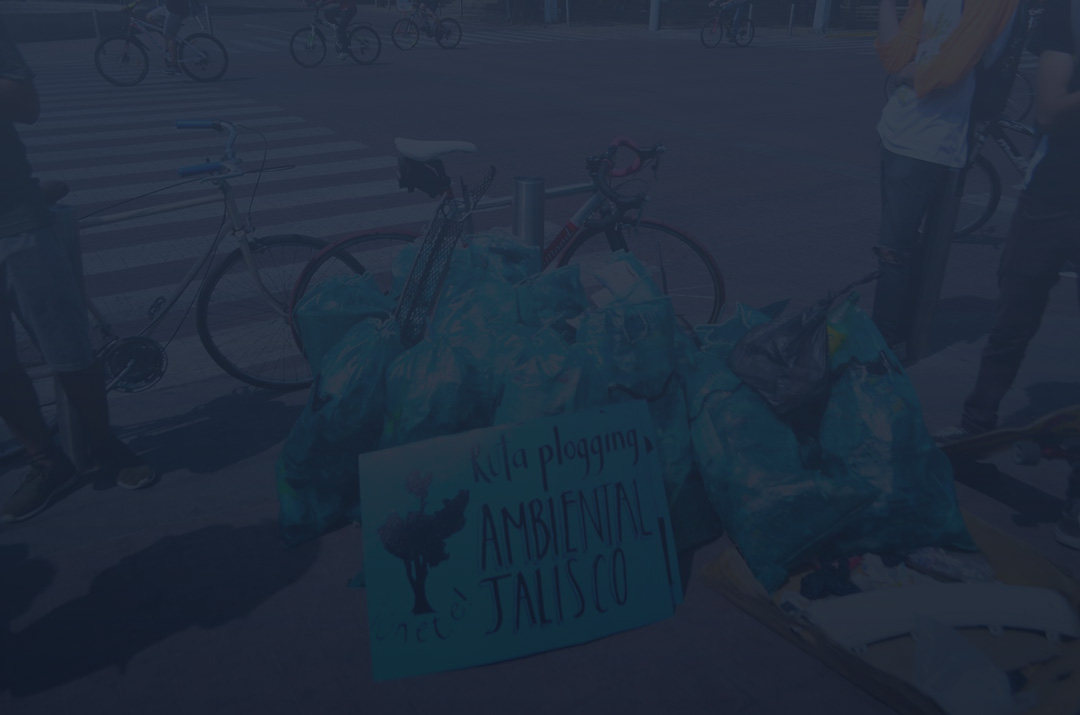
CASE STUDY
How Ambiental Jalisco is Using Live Blog for Digital-First Publishing
by Anna Rohleder | Jan 15, 2020
“Journalism for the protection of the environment” is the motto of Ambiental Jalisco (“Jalisco’s Environment”), a startup newspaper in Mexico focused on getting citizens involved in ecological issues that are literally in their backyard. Ambiental Jalisco publishes original investigative reporting, and also organises related community activities such as plogging, ie., jogging while picking up trash.
Increasing the public’s awareness of the environment and climate change are goals in themselves. But there is also a larger strategy at work: Ambiental Jalisco is the prototype for up to ten additional local news sites around Mexico, which are planned to become a cross-regional environmental reporting network under the umbrella of a think tank called EnviroPress.
To turn this vision into a reality, however, Amiental Jalisco has had to navigate a number of platform and workflow difficulties, some of which Sourcefabric was able to help solve.
The Challenge
Ambiental Jalisco was launched with a truly digital-first publishing strategy. “We design our news websites to operate as content aggregators, which means that we want to publish local news and content in a unique communication channel, with almost no external links and with strong emphasis on social networks,” says founder Alejandro Payan. Short articles or “notes” are published in the outlet’s social channels, including Facebook, Twitter, Instagram, and YouTube, with a link back to the website. In that sense, the website is more of a secondary destination, as the audience reads content on social media first.
When Ambiental Jalisco first launched its website, it lacked automatic archiving functionality. Another initial challenge was an editorial workflow that required content to be added manually. This not only created extra work for the site’s IT manager, but also limited the speed of publishing and the ability to respond to news in real time.
The Solution
As part of Sourcefabric’s media development work, Ambiental Jalisco received a pro-bono Live Blog instance. Our live blogging platform was embedded as a responsive element in the website, providing the dynamic, visually-interactive look of an infinite-scroll format.
Ambiental Jalisco has made the most of Live Blog’s multimedia features and social media integration. Each of their posts features several photos and often a video, along with highlighted pull quotes.
Along with delivering a better experience for readers, Live Blog has also made the editorial workflow more efficient. Payan says:
“Live Blog has strengthened our publishing capabilities by allowing multi-user access to the editing and posting interface.”
In other words, now the website’s reporters can publish stories themselves as soon as they are written and approved, rather than waiting for the IT manager to manually update the website.
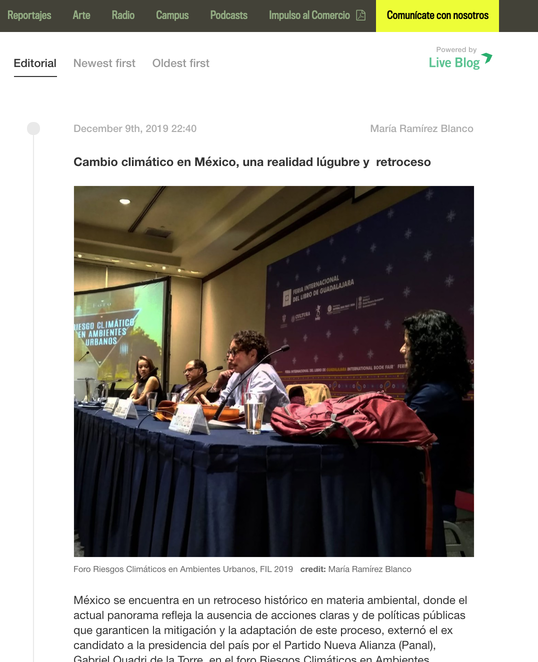
Ambiental Jalisco news feed
The Results
With enhanced speed of publishing and ease of use, Ambiental Jalisco has been able to increase its output of content and diversify the kinds of stories published. “With Live Blog we deliver information in real time, to improve knowledge that brings us closer to sustainability,” Payan says. “And what is especially important is that when readers visit the website, they will find information about only one topic: environmental protection in their cities.”
November 5, 2019
Case Study: VOST.PT, Using Live Blog to Cover a Weather Emergency

CASE STUDY
VOST.PT: Using Live Blog to Cover a Weather Emergency
by Todd Jatras | Nov. 5, 2019
Background:
VOST.PT is the Portuguese affiliate of VOST (Virtual Operations Support Team) Europe, a non-profit, online emergency response network that provides real-time intelligence to keep the public informed during times of crisis.
The VOST concept was developed in 2010 by a group of concerned emergency management communicators and technologists interested in filtering and managing social media during disasters, crises, and critical events. The goal was to build digital hubs where volunteers could gather and disseminate information in two directions. On one side, they would vet information from the public and pass it to the authorities. On the other, they would amplify the latest information from emergency services for the public.
Today, the VOST networks are a critical online source for events happening all over the world. After the Brussels terrorist attacks in March 2016, to use one example, VISOV (French-speaking VOST) quickly pulled together a team of 45 to monitor traditional media (TV, radio, print) and social media (Twitter, Facebook, YouTube, Instagram, Periscope, etc.) to identify information and breaking developments to keep those affected by the tragedy as up-to-date as possible.
The Challenge
VOST Portugal wanted to use a live blogging platform like our Live Blog software to cover Hurricane Lorenzo. The storm had briefly reached category 5, and was barreling towards the Azores and expected to reach the archipelago with potentially devastating force the next morning at the time of their first contact with Sourcefabric.
Because a key purpose of the VOSTs is to act as an intermediary layer in social media between the public and the authorities, VOST.PT needed a robust tool they could use to easily embed posts from any social medium.
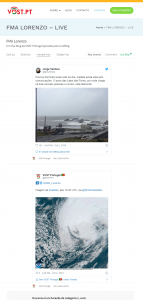
The Solution
Live Blog more than lived up to the challenge, providing VOST Portugal with a vital blogging tool that could incorporate all the social media platforms into a centralised repository, providing ample ways to editorialise it: curating, commenting and organising the latest information in a way that extracts what is most important or meaningful for the public.
Lorenzo skirted the western Azores, battering the nine volcanic islands of the archipelago with the strongest winds they had experienced in 20 years. One of the Azores’ most important commercial ports was destroyed, but fortunately, no deaths were reported.
According to Marco Maia, co-founder of VOST Portugal, Live Blog was the perfect tool to cover this dangerous event because it allows easy integration and imbeds from multiple social media sources, letting you sequence posts any way you want.
“At VOST Portugal, we work closely with social networks such as Twitter, Facebook and even Instagram. These social networks, despite having important tools in terms of content sharing, are limited in terms of publication history. That is, they are important in the communication structure of VOST Portugal, but probably due to their algorithms, they do not follow a logical sequence, something that Live Blog offers,” said Maia.
The Result
Live Blog Lorenzo registered 1,572 page views, and it was closely monitored by the news channel SIC Notícias. VOST.pt appeared there on the morning of October 2, contributing important crowd-sourced information gathered from those in the path of the storm as well as trajectory data from the National Hurricane Center in Miami, Florida.
According to Maia, “For us, LiveBlog allowed a deep content structuring ability that does not exist in a single social network or any combination of social mediums. That functionality, the ability to bring a lot of platforms and sources together in one accessible place, goes to the core of VOST Portugal’s activities.”
July 11, 2019
Case Study: Using Live Blog to promote reader engagement and media literacy

CASE STUDY
Nettavisen: Using Live Blog to promote reader engagement and media literacy
by Anna Rohleder | July 11, 2019
Norwegian online news site Nettavisen has used Live Blog to cover news events that generate a lot of discussion, such as the Premier League football player trading season, as well as the controversial trial of domestic terrorist Anders Behring Breivik in 2012.
The Challenge
Recently the site’s editors decided to experiment with Live Blog to cover news that usually doesn’t get so much public attention: in this case, meetings of the Oslo City Council. Part of the experiment was to see if there might be more interest from readers if the meetings themselves and the issues raised in them were more visible.
Nettavisen used Live Blog to cover city meetings once in the summer and once in the winter.
“Using the live tool to cover the Oslo City Council meeting was primarily a convenient way for us to take notes from the meeting and at the same time give the audience a way to see what was happening. It can be a tool that gets readers involved,” said Trond Lepperød, the reporter who covered the meetings.
It’s not just a way to get readers more involved with local government. It’s also an opportunity to educate them in how the news itself is constructed. The format of a live blog, with its chronological timeline of the meeting, along with quotes from various people speaking, supplemented by photos or other multimedia, “disassembles” all the elements of a conventional news article and presents them for consideration individually. Enhancing transparency toward readers was one of Nettavisen’s editor’s aims, in particular through sharing with the audience the source material they are working with.
It can also be interesting for other journalists to look through the meeting’s live blog as a kind of transcript and find topics to follow up on and make their own news stories about.
The Results
The verdict so far is that these experiments are worth doing, to keep exploring new storytelling formats and see how they work on different devices and platforms. Nettavisen aims to keep experimenting with the use of Live Blog for other breaking news events such as severe weather and elections.
“It’s about picking the right moment and occasion for the tool,” said Lepperød.
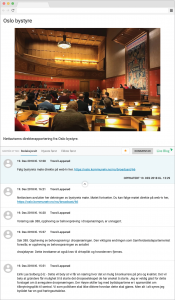
Some of the topics under discussion during the winter session included:
- Deregulation or some loosening of some of the existing rules governing the taxi industry.
- Banning e-bicycles in the municipal forests.
Some of the topics under discussion during the summer session included:
- Ensuring that the activities and investments to promote Oslo as Europe’s environmental capital are carried forward.
- Whether the police have guns in certain situations, i.e. when facing gangs.
June 27, 2019
Double duty at DPA: How Germany’s top news agency benefits from Live Blog

Double duty at DPA: How Germany’s top news agency benefits from Live Blog
by Anna Rohleder | June 25, 2019
The challenge
DPA is Germany’s main news agency with virtually all of Germany’s media organisations as their clients. Part of the value they offer is the ability to cover news events at the national and international level, especially when something sudden or unexpected occurs.
In dpa’s Berlin newsroom, there is a “top desk” where the agency’s journalists gather during such major news events. Among the other reporters and editors, there is a Live Blog editor who creates a new blog on the topic on the spot, adding updates as they come in.
The solution
“We can respond quickly to breaking news and launch a live blog about an event right away, which our clients can then put on their websites,” said Jirka Albig, head of marketing and product management at dpa-infocom. “It’s like an insurance policy for unforeseen events.”
Recent examples of these live blogs include the fire in Notre Dame, the terror attacks in Sri Lanka and ongoing political maneuverings over Brexit in Britain.
Having a ready-to-publish package of text, photos and a running commentary on the timeline of an event that’s unfolding in another country or continent is valuable in itself for newspapers and smaller media organisations in Germany, and even more so when such events happen outside of their newsroom hours, i.e. at night or the weekend.
All of dpa’s live blogs – including blogs covering planned events such as elections, as well as blogs related to running topics like top photos of the day – are available in their web shop. For customers, it is possible to buy individual blogs “a la carte” right from this page (and they are all free to browse or follow for readers). In practice, however, most of dpa’s clients have a subscription entitling them to publish any of the live blogs on offer.
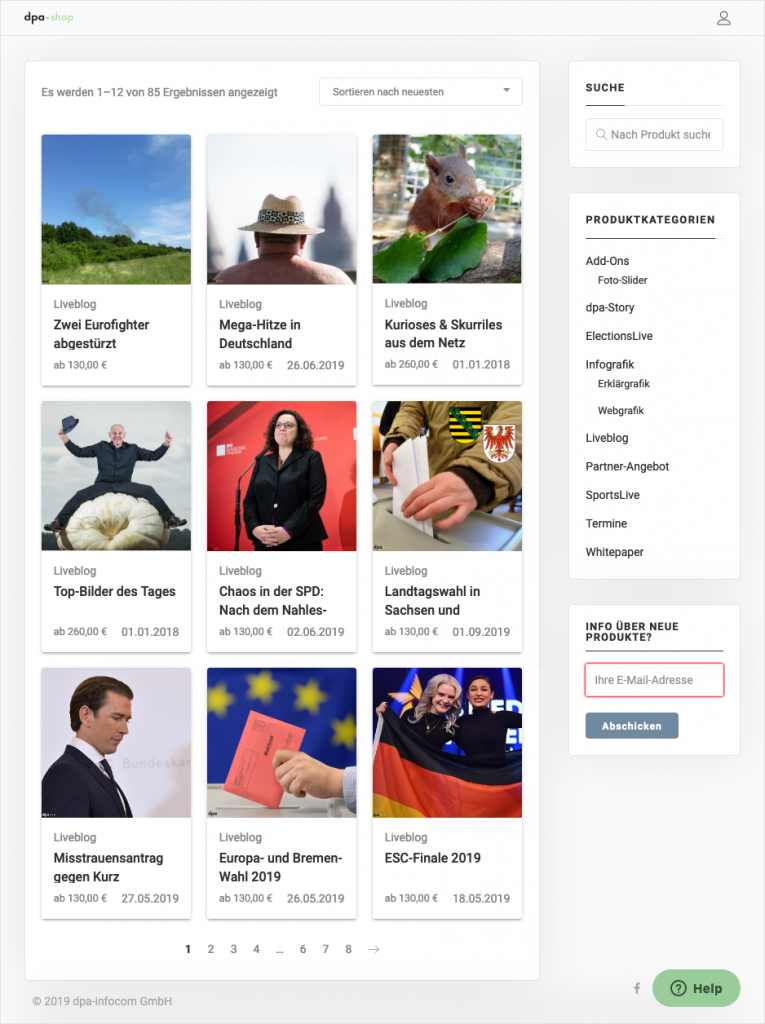
A variety of live blogs are available from dpa’s web shop.
Whether through a subscription or one-off purchase, the customer receives an embed code for the live blog, which they can then insert into their website. No matter what website platform a customer is using, integration is seamless: the content of the blog goes live on their site instantly.
If the news organisation is also using Sourcefabric’s Live Blog or another live blogging platform themselves, the possibilities for creating something even more valuable for the audience increase. The customer news organisation can add their own local content and commentary to the national or international news delivered by dpa, turning the live blog into a truly co-produced product.
Two recent examples of this type of cooperation included the crash of two Eurofighter jets in northeastern Germany and a live blog of a late-June heat wave. In both cases, the main news provided by dpa was supplemented by local news providers in the affected regions.
Live Blog serves a few key purposes both for dpa as a news agency and in the news ecosystem as a whole. First, it eliminates the technological and financial hurdles to producing live coverage, giving smaller media organisations in particular the ability to report on breaking news events. Second, Live Blog’s flexibility as a format fosters more creativity in journalistic storytelling. And as a collaboration platform, Live Blog allows news organisations of various sizes in different parts of the country to work together on something that benefits them all.
“It does represent an additional revenue stream for us, but its value is even greater for building customer relationships,” said Jirka Albig.
Ready to blog better? Sign up for the Live Blog newsletter, or get in touch with any questions here.
May 8, 2018
Featured Live Blog: dpa’s “Weird News & Other Offbeat Stories”
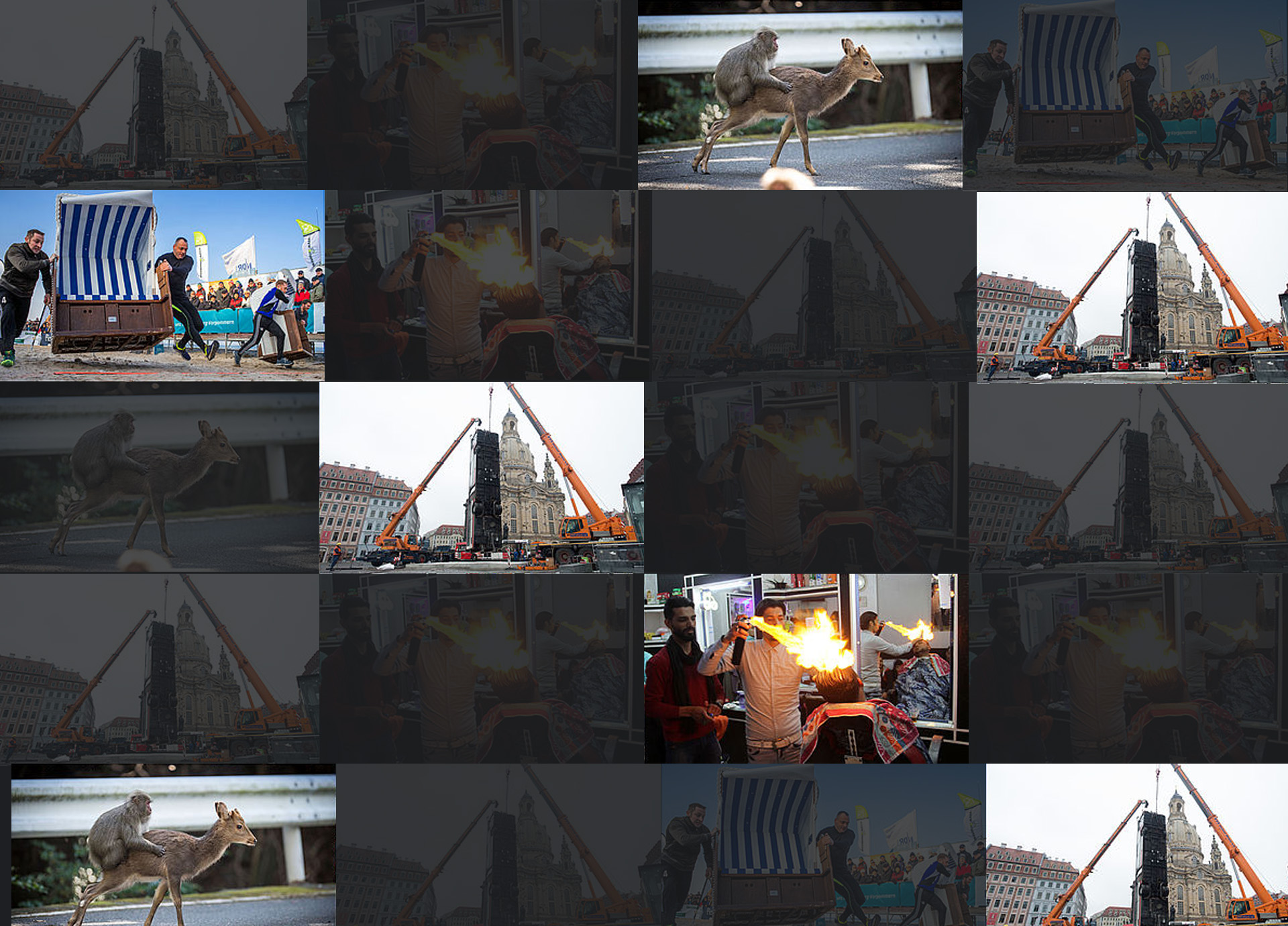
Featured Live Blog: dpa’s “Weird News & Other Offbeat Stories”
by Julia Vernersson | May 8, 2018
It has already been three years since Germany’s largest press agency, dpa, began their live blog “Weird News & Other Offbeat Stories”. Since, it has become the go-to place to discover Germany’s weirdest happenings and news. Live Blog users can syndicate this blog, complementing their own regional stories with other dpa-live content and making it all easily available to their subscribers. “Weird News & Other Offbeat Stories” is currently embedded in around two dozen customer websites, including Mitteldeutsche Zeitung and Radio Essen. We had a look behind the scenes of this popular blog by asking Süleyman Artiisik from dpa a few questions.
What makes this blog so special?
Every day in Germany and around the world a lot of strange things happen – ranging from the curious and bizarre to the adventurous. Then, there are topics that go viral on the net. We gather all of these in one place – on our blog. It is a “good mood blog”, there is nothing about death or serious injuries. The blog should bring a smile to the reader’s face.
What is the weirdest post you have published so far?
There are now more than 4,000 posts on the blog. It’s hard to say which one is the winner – there are quite a few candidates. For example, we recently posted one about a flying duck that was caught by a speed control camera in a 30 km/h zone in Switzerland, and one about a ten-year-old boy who called the police because he could not solve his homework.
How big is your blogging team?
Indirectly, this blog incorporates the dpa’s reporting and photography network. For the maintenance of the blog, we often use, among other things, the dpa text and photo service. We are also on various social networking sites and look for weird stories, videos and photos. For this, we use special social media monitoring tools. On a typical day, two people work two different shifts on the blog.
How does Sourcefabric’s Live Blog help you to run a good blog?
It is very useful. With the tool, we can embed all contributions from social networks via an embedding code directly into the blog – be it from Twitter, Facebook, Instagram or YouTube. This means we do not have to use external links. We also enjoy the possibility of freedom to design a post. A post doesn’t have to consist of only text and a photo or a video – we can combine anything we need.
What do you wish for the “Weird News & Other Offbeat Stories” blog in the future?
That customers feature this blog prominently on their websites. It’s no secret that readers spend more time on live blogs than reading regular articles. Live blogs also have a higher number of visitors, especially blogs that focus on entertainment and humour.
April 19, 2018
Featured Live Blog: “Eisbären Blog”

Featured Live Blog: “Eisbären Blog”
by Julia Vernersson | Apr 19, 2018
The Liveblog “Eisbären blog” follows the Berliner Ice Hockey team Eisbären since August 2014. We checked in with Tagesspiegels Jörg Leopold, one of the three-men-team behind the Eisbärenblog about their live coverage from the ice rink.
What makes the Eisbären Blog so special?
The mixture of content: we cover the live games, of course, but we also blog about the training, as well as publish photos and conduct interviews exclusively for the blog. The Eisbären blog is a niche product for a very special target group. Currently, we have at times more than 100.000 readers. We never thought that we would reach so many, but our content is exclusive and cannot be found in the printed newspaper Tagesspiegel. With this content, we go far beyond the normal club coverage: not just focusing on the Eisbären, but looking at the fascinating sport of ice hockey as a whole.
You run a seasonal blog including game reporting. Why did you decide to do so?
What sports are all about, is games. We soon noticed that the live coverage is very well received by the audience. And so together with all the background info, which we are continuously providing to our readers, this became a special service we offer.
Live is live: what’s the craziest thing you’ve experienced in the live blogging of the games?
In the important seventh quarterfinals of in the 2015/16 season, in which the Eisbären played against Cologne, the laptop stopped working shortly before the end. The game ended an hour later and nobody scored. Nevertheless, this was of course extremely frustrating because reporting via the mobile app is not quite the same.
How does Sourcefabric’s Live Blog support you in running a good liveblog?
Through the mobile app you are more or less always online, even on the go. If I speak with the players in the mixed zone or during a press conference, I can update the information directly on the blog. This is the real live blogging. Our scoreboard is also very practical: the score is what you are after in a hockey game, to grasp that immediately is important to the reader.
What do you wish for the Eisbären and the blog in the future?
The Eisbären made it to the final this season, if they also win the title, we can call ourselves the Championblog! As for Sourcefabric, I wish that we could soon be able to add our own videos built-in directly into the blog – the way it is currently possible to do with images.
Note: The Live Blog team is working on adding the functionality of uploading own video content in the Live Blog. The update is scheduled within one of the next releases in Q3 2018.



